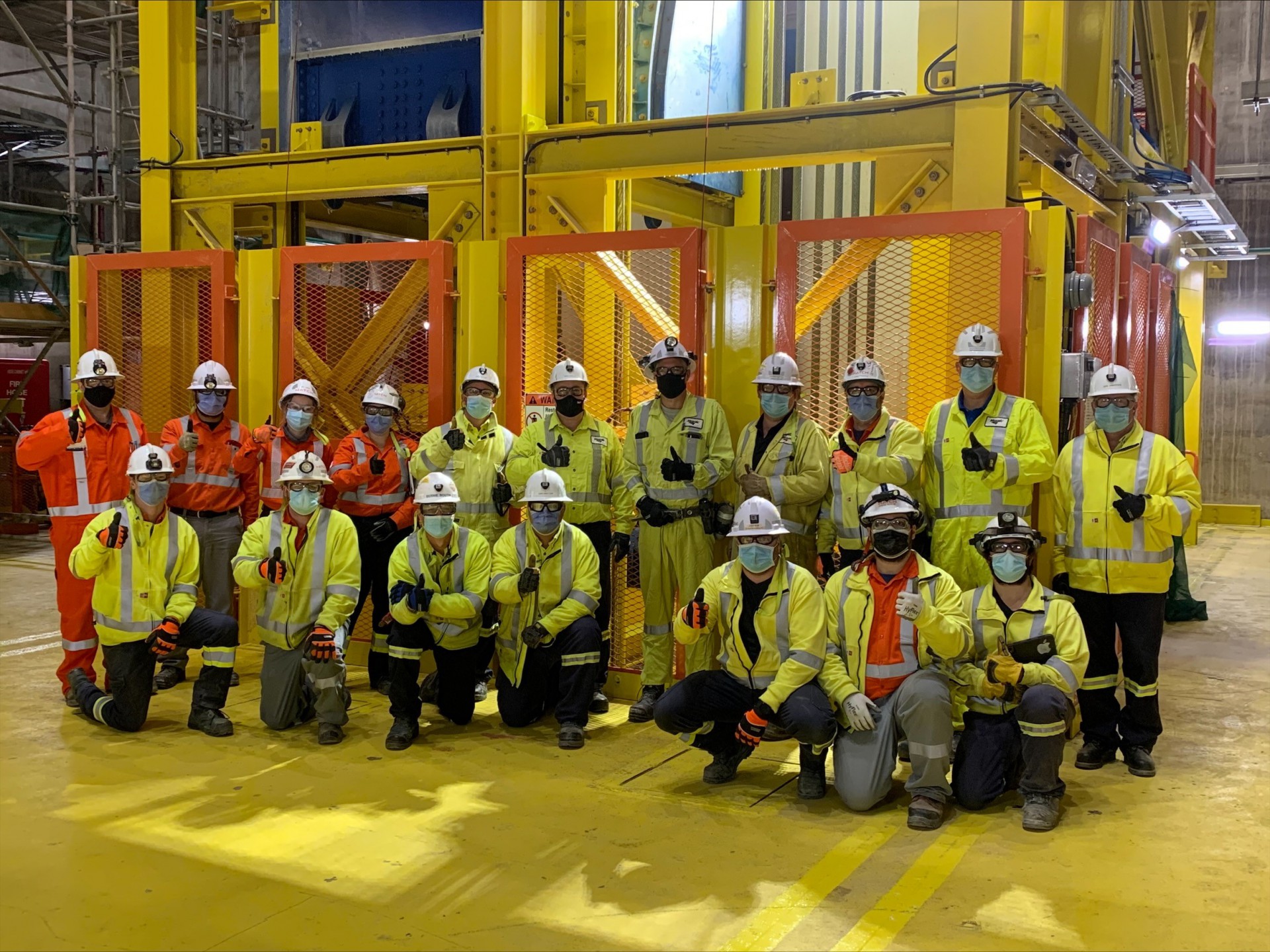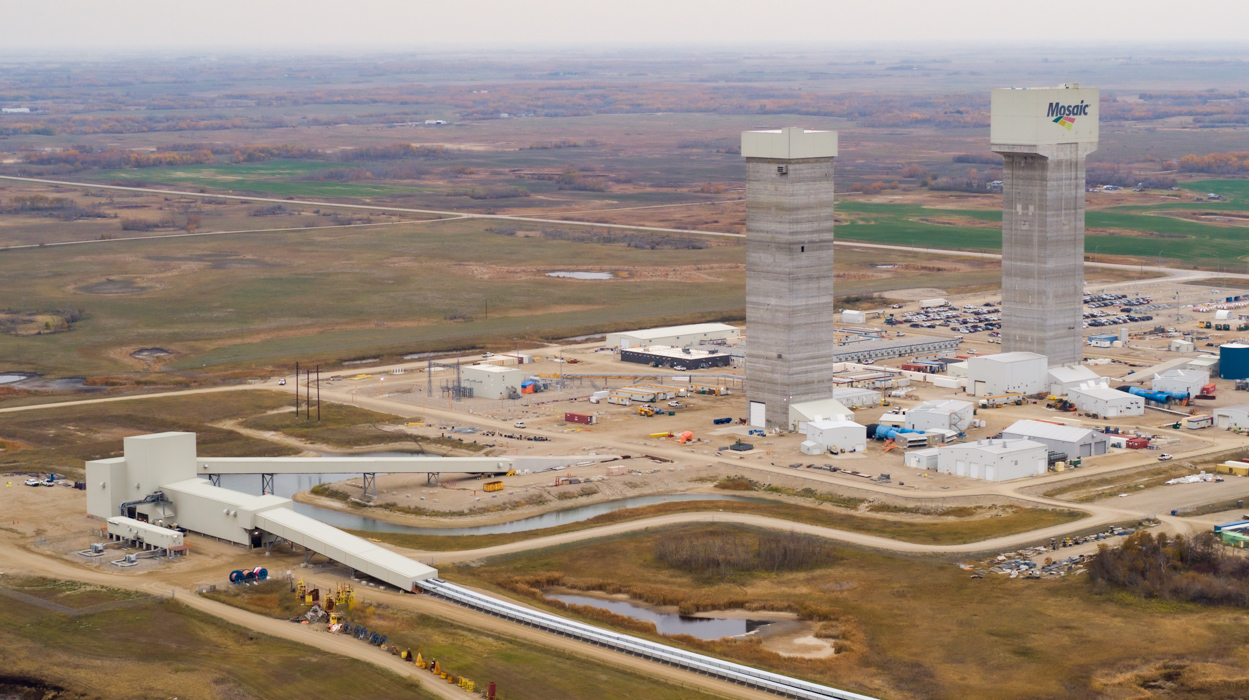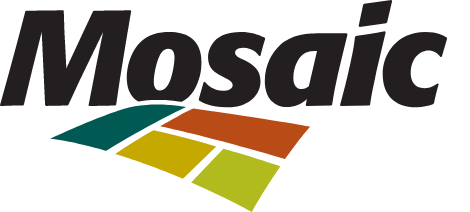
Readying K3’s South Shaft Headframe for Production
The future of Esterhazy is taking shape. Rich potash ore continues to be hoisted up K3’s completed north shaft at an average rate of more than 30,000 tons per day, and final work is underway to begin production at K3’s south shaft later this month.
“Thanks to the dedication of our team and contract partners – the south shaft headframe will be safely completed approximately three months ahead of schedule,” explains Bernie Boutin, Director of Capital Projects – K3. “It was always a goal to accelerate completion of the south shaft headframe, mine ore storage bins and related conveyor systems, however the early closure of K1 and K2 made it that much more important.”
Video: Two major “firsts” for our Esterhazy K3 project – potash ore being conveyed for the first time through the south coarse ore bin system on Oct. 5 and through the south surge bin system and up the south shaft headframe for the first time on Oct. 19.
Commissioning of the south shaft and mine ore handling system took place throughout October. First ore was safely and successfully conveyed through the massive 6,000-ton-capacity south coarse ore bin, and then conveyed through the south surge bin system up the south shaft headframe using the newly completed Koepe hoist and 60-ton skips. Ore from mining machines cutting in the south portion of K3 is conveyed to the south coarse ore bin. From here, it can be directed to either the south surge bin and hoisting system, or to the north surge bin and hoisting system.
The focus now is on final preparations to begin production at the south shaft headframe this month – starting at 10,000 tons per day the first week then ramping up every week thereafter to achieve an additional 40,000 tons of hoisting capacity per day by December. By that time, a ninth four-rotor mining machine is also expected to be in production at K3 – with two additional mining machines expected to be in production at K3 by June 2022.
Mining machines that are cutting in a production panel make three passes – the first pass to set the direction and forge a new path through rock, then second and third passes to mine ore. More than 21,000 feet (or 247,000 tons) have been cut by these machines utilizing first-pass automation since testing began in April, and the entire fleet is expected to be operating autonomously for all three passes in fully developed production areas in early 2022. Running these machines with minimal human intervention reduces risk for our employees and eliminates downtime, as they can safely operator 24/7.
Esterhazy’s K3 has twin shafts that sink more than 3,000 feet – each covered by headframes that rise more than 300 feet above ground. The north shaft (on right) is used to move ore to the surface and transport people and equipment. The south shaft (on left) will be used solely to move ore to the surface.

Esterhazy’s K3 has twin shafts that sink more than 3,000 feet – each covered by headframes that rise more than 300 feet above ground. The north shaft (on right) is used to move ore to the surface and transport people and equipment. The south shaft (on left) will be used solely to move ore to the surface.
Video: Time-lapse video to see construction of the Koepe hoist in K3’s south shaft headframe.
